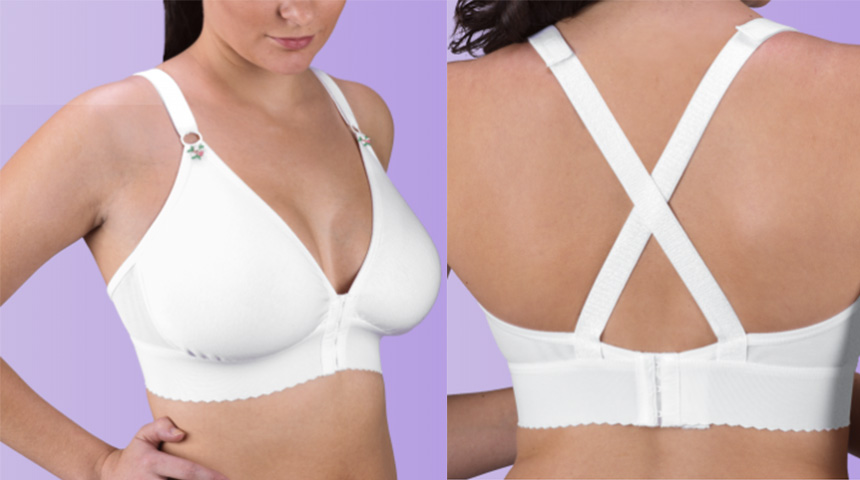
Preventing Complications During Breast Augmentation
Breast augmentation presents exciting possibilities. The prospect of a new, fabulous figure negates the pain of going under the knife.
That said, every surgery is fraught with complications. This article explains what some of these are and suggests how to manage them.
Complication During Breast Augmentation
Complications do happen during breast augmentation surgery, and it’s the surgeons’ responsibility to inform patients of the possibilities.
Let’s think about these complications in a realistic way. Surgeons should take measures to avoid them and will emphasize the essential aspects of post-operative care.
- Bleeding
First of all, the most significant risk patients face after surgery is bleeding. Hence, they should return to their doctors after surgery so that they can trace if there are any signs of bleeding. If there is, they can administer treatment immediately.
- Incision Issues
Infections may set in after any surgery. It does not matter if the surgery is for cosmetic or medical reasons. They usually occur within a week after the surgery but may happen at any time. Note that infections that occur with the presence of an implant are harder to treat than those that are without one. It may be necessary to readmit patients who do not respond well to breast implant surgery. A responsible breast surgeon will make an effort to clean incisions to prevent scarring. Stitches are typically internal and it should be able to dissolve by itself. Attending all post-operation appointments is essential.
- Implants that are too high
Besides bleeding and wound healing issues, implants may rest in an area that’s too high after surgery, usually because of early capsular contracture. Your surgeon may prescribe medication to soften old scars should he notice that the capsules haven’t come down.
- Capsular Contracture
Implant malposition (the breast implant rests in the wrong place) may occur three months after surgery, triggering an infection. The body heals itself by creating a wall of tissue around the implant. The scar tissue is the body’s way of healing itself. However, the capsule may be hardened as the body tries to fight off the infection. Medication can treat it if the surgeon discovers it early enough.
- Implant Malposition
As its name suggests, Implant Malposition occurs when a breast implant is in the wrong place. Implant malposition can occur even three months after Implant surgery. Implants occasionally move toward the armpit. Remedying the situation will depend on the circumstances and the patient ‘s condition. Good news is that such cases are very rare.
- Implant Rupture
An implant rupture occurs when the implant folds over and rubs against itself. The friction would result in tearing the implant and causes the silicone gel in it to leak. Implant breakage happens in two ways. Intracapsular rupture occurs inside the scar tissue capsule within the implant. Extracapsular breaches affect the tissue outside the implant. Contrary to the misinformation that were circulated online, ruptures don’t occur during accidents or mammograms. Silicone stays in the implant pocket. Surgeons call these ‘silent’ ruptures. That said, implant break happens at the rate of about 0.5% a year. Patients should have MRI (Magnetic resonance imaging) examinations every two to five years to detect them.
- Breastfeeding after Breast Augmentation
Though breastfeeding complications are possible, they don ‘t happen often. Typically, a surgeon inserts the implant under the breast muscle. Mums who have had perioral insertions would have a higher chance of having difficulties during breastfeeding.

- Late Seromas
Late seroma is a buildup of periprosthetic fluid (a fluid developed in wounds) that occurs where surgery has taken place. The fluid may be stored up one year after breast augmentation. No one knows its cause, but it may be linked to infections. It may also come about because of the micromovements between the implant and the tissue, resulting in a double capsule.
- Double Capsule
A Double Capsule refers to two capsule layers around an implant, with intracapsular space. Between the layers is seroma-like fluid. It could come about because of the rotation of the implant owing to the interface between the inner and outer layers. Medical researchers have developed four theories about how double capsules form. Some think that it happens when an implant moves within an oversized pocket. Others attribute to the stresses applied to the implant complex, which causes a new inner layer to form. Some state that they develop because of seromas, while a fourth theory conjectures that a new layer forms within the implant capsule because it detaches from the surrounding breast tissue.
- Breast Implant-Associated Anaplastic Large Cell Lymphoma
Medical researchers are still trying to understand this condition because of the limited reporting of breast implant data. However, they do know that it is a T-cell lymphoma that develops after surgery. It often occurs with implants that have textured surfaces, and also, after the removal of defective implants.
BIA-ALCL has connections with breast implants filled with post-surgical fluid. Most cases occur during revision surgery and have symptoms of breast lumps, swelling, and breast asymmetry.
Preventing Complications During Breast Augmentation Surgery
Surgeons and patients can do much to reduce the complications of breast augmentation surgery. Here are some of the things they can consider.
- Minimizing contamination
Surgeons can minimize the risk of contamination by embracing procedures like preoperative antiseptic showering, which significantly reduces the bacterial count on the skin. Chlorhexidine, povidone-iodine, and triclocarban medicated soap which aids in reducing the incidence of bacteria. Antisepsis of the skin is an important issue to reduce the concentrations of bacteria at the operative site. Surgeons may also perform antisepsis of the skin to prevent bacteria from entering wounds — two-phase antisepsis results in the reduction of bacteria to a low equilibrium.
- Post-operative bra
The patient must wear a post-operative bra day and night for two months. Besides preventing the implants from sliding, a post-operative bra also halts tissue adherence and ingrowth.

- Careful surgical techniques
Proactive haematosis reduces seroma and haematoma. This surgical procedure involves dissections with electrocautery and leaves connective tissue on the ribs. The surgeon conducts a customized pocket dissection with the ‘no-touch technique.’ He then waters the pocket with antibiotics.
This procedure aside, here are some suggestions to minimize iatrogenic rupture:
- Surgeons should never touch devices with sharp instruments like scalpels and needles.
- Surgeons should not apply too much force to small areas of the shell when inserting the device.
- Surgeons must make incisions of an adequate length to house the type, size, and profile of the implant.
- Surgeons must prevent wrinkles and folds in the device as they insert it.
- Choose a board-certified plastic surgeon
Not all doctors are specialists in plastic surgery, so it’s wise to find out a potential plastic surgeon’s credentials. Select one who has received his or her certification from the Singapore Association of Plastic Surgeons.
- Do research
It’s a must to ask yourself some essential questions before your breast surgery appointment. Are you healthy enough for the surgery? What’s the name of the procedure, and what does it entail? What are the risks involved? It’s also important to consider what outcomes you would want from the surgery knowing that there bound to have scars for every surgery.
- Don’t hesitate to ask questions
Responsible doctors are never afraid to address their patients concerns or questions. Expressing these worries will limit complications during the process.
In conclusion, surgical complications are less likely to occur when there is careful planning from the surgeons and tight communications between patients and doctors. Those considering breast augmentation should bear these tips in mind.
